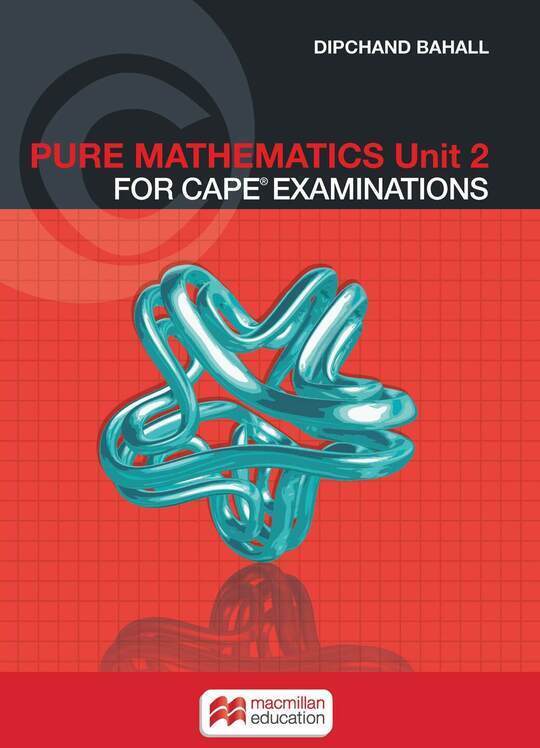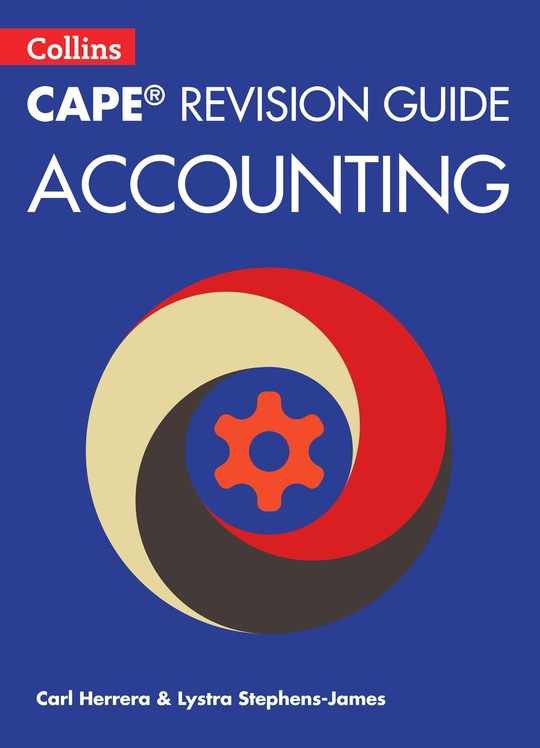
Biology for CAPE® Examinations
US$ 34.32
The publisher has enabled DRM protection, which means that you need to use the BookFusion iOS, Android or Web app to read this eBook. This eBook cannot be used outside of the BookFusion platform.
Description
Contents
Reviews
Language
English
ISBN
9780230465763
Cover
Title Page
Copyright
Contents
Preface
Unit 1 Biomolecules, reproduction and development
Module 1 Cell and molecular biology
Chapter 1 Elementary biochemistry
Learning objectives
Water
Acids, bases, the pH scale and buffers
Chemical structure and function of carbohydrates
Importance of glucose, sucrose, starch, glycogen and cellulose
Carbohydrates as organic building blocks
Chemical structure and function of proteins
Importance of haemoglobin and collagen
Chemical structure and functions of lipids
Chemical structure and function of phospholipids
Testing for reducing sugar, non-reducing sugar, starch, lipid and protein
Investigations
Summary
Review questions
Answers to ITQs
Chapter 2 Cell structure and function
Learning objectives
Comparison of the light microscope and the electron microscope
Prokaryotes and eukaryotes
Features of the typical prokaryotic cell
Features of the typical eukaryotic cell
Structure and function of organelles
Endosymbiont theory
The fluid mosaic model of membrane structure
Movement of substances across biological membranes
Tissues and organs
Cell communication
Investigations
Summary
Review questions
Answers to ITQs
Chapter 3 Enzymes and metabolic reactions in cells
Learning objectives
Factors affecting chemical reactions
Catalysts
Enzymes are the catalysis of metabolic reactions
Mode of action of enzymes
Induced-fit hypothesis
Enzyme specificity
Factors affecting enzyme activity
Enzyme regulation
Enzyme inhibitors
Practical applications of enzymes
Investigations
Summary
Review questions
Answers to ITQs
Module 2 Genetics, variation and natural selection
Chapter 4 Structure and roles of nucleic acids
Learning objectives
Chemical structure and function of nucleotides
Structure and function of deoxyribonucleic acid
Expression of genetic information and the genetic code
DNA replication
DNA proof-reading and repair
Structure and function of ribonucleic acid
Protein synthesis
The link between DNA, chromatin and chromosomes
Applications of the principles of DNA replication
Genetic control of phenotype
Investigations
Summary
Review questions
Answers to ITQs
Chapter 5 Mitosis and meiosis
Learning objectives
The importance of mitosis
The maintenance of genetic stability
The stages of mitosis
The importance of the haploid and diploid numbers
The stages of meiosis
Genetic variability and meiosis
Abnormalities in cell division
Down syndrome
Cancer as a genetic disorder
Investigations
Summary
Review questions
Answers to ITQs
Chapter 6 Patterns of inheritance
Learning objectives
The basis of Mendelian genetics
Monohybrid crosses
Law of segregation
Law of independent assortment
Dihybrid crosses
Analysing, interpreting and understanding genetic experiments
Basic rules of probability
The chi-squared test
Incomplete dominance, codominance, epistasis, hybrid vigour and sex-linked inheritance
Mendelian inheritance in humans
Investigations
Summary
Review questions
Answers to ITQs
Chapter 7 Genetic engineering
Learning objectives
Principles of biotechnology
Isolating and cloning genes
Applications and techniques of genetic engineering in plants
Recombinant DNA applications in medicine
Human gene therapy
Human Genome Project
Transgenic plants
Transgenic animals
Transgenic microorganisms
Ecological concerns about genetically modified organisms
Implications of using GMOs
Investigations
Summary
Review questions
Answers to ITQs
Chapter 8 Variation and natural selection
Learning objectives
Sexual reproduction as a mechanism to introduce genetic variation
Phenotypic effects of mutations: sickle cell anaemia, phenylketonuria, cystic fibrosis
Natural selection and evolution
Artificial selection and agriculture
Selection in natural populations
Types and causes of gene mutation
Environmental factors as forces of natural selection
Mechanisms of natural selection
The biological species concept
The process of speciation
Mechanisms of reproductive isolation of species
Investigations
Summary
Review questions
Answers to ITQs
Module 3 Reproductive biology
Chapter 9 Asexual reproduction and vegetative propagation
Learning objectives
Types of asexual reproduction
Principles and importance of vegetative propagation
Techniques and applications of tissue culture
Genetic consequences of asexual reproduction
Investigations
Summary
Review questions
Answers to ITQs
Chapter 10 Sexual reproduction in the flowering plant
Learning objectives
Structure and function of flowers
Pollination and fertilisation
Mechanism of self-fertilisation and cross-fertilisation
Fruit and seed development
Fruit and seed dispersal
Genetic consequences of sexual reproduction
Investigations
Summary
Review questions
Answers to ITQs
Chapter 11 Sexual reproduction in humans
Learning objectives
Sexual reproduction
The male reproductive system
The female reproductive system
The ovarian cycle
The uterine cycle
Fertilisation and implantation
Structure and function of the placenta
Pregnancy
Methods of birth control
Sexually transmitted diseases
Artificial insemination
Investigations
Summary
Review questions
Answers to ITQs
Unit 2 Bioenergetics, biosystems and applications
Module 1 Bioenergetics
Chapter 12 Photosynthesis
Learning objectives
Anatomy and function of leaves
Structure and function of chloroplasts
The light-dependent stage of photosynthesis
Pigments of photosynthesis and their action spectra
ATP synthesis
The Calvin cycle is light independent
Factors affecting photosynthesis
Investigations
Summary
Review questions
Answers to ITQs
Chapter 13 Cellular respiration
Learning objectives
Overview of aerobic respiration
Steps of glycolysis and the formation of acetyl-CoA
Structure and function of mitochondria
The Krebs cycle
The electron transport chain
ATP synthesis
Energy yield from aerobic respiration
Anaerobic respiration: lactate fermentation and alcohol fermentation
Investigations
Summary
Review questions
Answers to ITQs
Chapter 14 Energy flow and nutrient cycling
Learning objectives
Ecosystems, habitats and ecological niches
Energy flows in ecosystems
Energy losses at different trophic levels
Biomass
Biological pyramids
Composting
The nitrogen cycle
Ecosystems as self-sustaining units
Investigations
Summary
Review questions
Answers to ITQs
Chapter 15 Ecological systems, biodiversity and conservation
Learning objectives
The dynamics of ecosystems
Biodiversity
The importance of maintaining biodiversity
Factors contributing to loss of biodiversity
In situ and ex situ conservation
Conservation in the Caribbean
Investigations
Summary
Review questions
Answers to ITQs
Module 2 Biosystems maintenance
Chapter 16 Uptake and transport of water, minerals and products of photosynthesis
Learning objectives
Overview of transport in plants
Overview of plant nutrition
Structure and function of roots
Structure and function of xylem
Water movement in plants: transpiration and the cohesion–tension theory
Structure and function of phloem
Transport of sugars in phloem: pressure flow theory
Investigations
Summary
Review questions
Answers to ITQs
Chapter 17 Circulatory system of mammals
Learning objectives
Overview of mammalian circulation
Anatomy of the heart
The cardiac cycle
Composition and function of blood
Structure and function of blood vessels
Regulation of blood pressure
Capillary exchange
Cardiovascular disease
Overview of the respiratory tract
Principles of gas exchange
Transport of carbon dioxide and oxygen
Investigations
Summary
Review questions
Answers to ITQs
Chapter 18 Homeostasis and hormonal action
Learning objectives
Homeostasis
Principles of hormonal action
The human endocrine system
Functions of insulin and glucagon
Plant hormones: ethylene
Commercial use of plant hormones
Investigations
Summary
Review questions
Answers to ITQs
Chapter 19 Nervous coordination
Learning objectives
Differences between endocrine and nervous communication
Overview of nervous communication
Organisation of the nervous system
Structure and function of neurones
The resting potential
Propagation of an action potential
Synapses and neurotransmitters
Postsynaptic potentials: temporal summation and spatial summation
Effects of drugs and nerve agents on the nervous system
Investigations
Summary
Review questions
Answers to ITQs
Chapter 20 The kidney, excretion and osmoregulation
Learning objectives
Osmoregulation
Overview of the urinary system
Structure and function of the kidney
Urine production
Hormonal regulation of kidney function
Dialysis, kidney transplants and kidney stones
Investigations
Summary
Review questions
Answers to ITQs
Module 3 Applications of biology
Chapter 21 Immunology
Learning objectives
Overview of the immune system
Innate immunity and acquired immunity
Overview of the lymphatic system
Barriers and non-specific defences (cellular innate defences)
Specific defences: immunity
Immunoglobulins
The structure and function of the B cell and T cell antigen-specific receptors
Clonal selection
Humoral and cell-mediated immune responses
Active immunity, passive immunity and vaccination
Antibodies in medicine
Allergic reactions
ABO blood typing system and the Rhesus factor
Investigations
Summary
Review questions
Answers to ITQs
Chapter 22 Health and disease
Learning objectives
Maintenance of health
Effects of diet and exercise on the body
Categorisation of diseases
Incidence rates and mortality rates
Chronic non-communicable diseases
HIV/AIDS
Dengue
Investigations
Summary
Review questions
Answers to ITQs
Chapter 23 Substance abuse
Learning objectives
Drug use
Effects of alcohol consumption on the body
Alcohol and violence
Alcohol and driving
Effects of cigarette smoking on the body
Investigations
Summary
Review questions
Answers to ITQs
Chapter 24 Practical biology and school-based assessments
Techniques for biological drawing
Calculating magnification
How to use a microscope
Preparing a wet mount microscope slide
Microscopy measurement
Graphical representation of data
Planning and designing experiments
Data collection and analysis
Organising and presenting a report
How to plan and design an experiment
Study tips for biology tests and exams
Examples of experiments
Examples of x2 calculations
Examples of assessment criteria
Selected bibliography
Index
Back Cover
The book hasn't received reviews yet.











